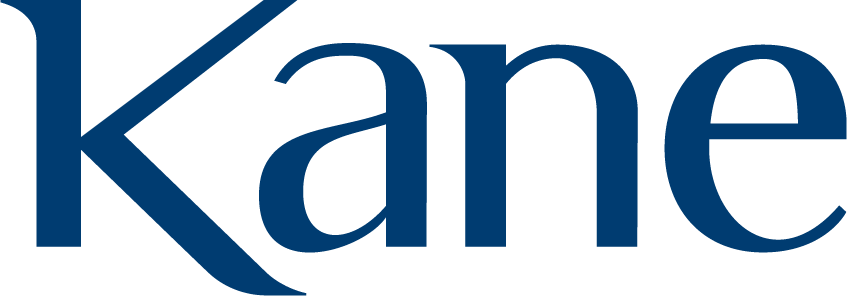Getting Personal - The Importance of Personalization in Marketing and Communications
Everyone wants to feel special! Personalizing communication to a specific audience member’s interests and preferences makes them feel important. The more connected people feel to your business and organization, the more engaged they’ll be, and the more likely they’ll support you for years to come!
Personalization is especially important when it comes to fundraising. Taking this type of strategic approach to your communications can have a significant impact. As Milwaukee area professionals know, there’s a lot more to fundraising than soliciting donations. Successful fundraisers have a keen understanding of their target audiences, know what motivates them to give, and develop an on-going relationship with them beyond the ask for a gift.
The keys to that personalized communication are a strong case for support and strategic ongoing and meaningful donor communication.
Start with a Case for Support
According to Joe Garecht, a world-recognized fundraising consultant, author and speaker, a case for support (or case statement) is one of the most important strategic documents in the development field. It’s an emotionally-compelling narrative that casts a vision for your organization and tells donors why they should invest in your work. While there are many different ways to structure this document, Joe recommends that a strong case for support include the following seven sections:
Emotional opening Use your opening paragraphs to hook your readers and make them feel.
Your mission and vision Your case for support should move from the emotional opening to the reason your organization exists. This is the “why” of your nonprofit.
Explanation of your programs/services Your case for support should tell the reader how you are solving the problem, and what you actually do to meet the vision for your nonprofit.
History of your organization You’ve explained your programs, now give a brief summary of the founding of your organization and a short history of its work to date. This adds proof and credibility to your case for support.
Outcomes, stories, proof of impact Tell the stories of those you have helped and use testimonials from your clients, community leaders and other supporters.
Financial need Tell your donors what their donation will be used for, and how it will impact your programs and those you serve.
Means of support Tell your donors all of the different ways they can financially support your nonprofit.
Click here to download a case for support written by Joe for a fictional nonprofit.
Know Your Donor
Now that your organization has an emotionally-charged, compelling case for support, let’s focus on strategically communicating with your current donors and prospects. A nonprofit’s donor database is an organization’s most valuable asset. You should be able to use your database to segment donors to best appeal to their motivations for support for your organization. In addition to the usual demographics, donors can be segmented by:
Reason for giving
Size of gift
Frequency of gift
How a donor was acquired
How he/she prefers to give
First-time vs. returning donor
Renewal vs. lapsed
Engagement level
Areas of Interest
Life stage
Career status
As the former marketing director at the United Performing Arts Fund (UPAF), I tested many different ways to segment donors and tracked responses throughout the course of each year.
An example of a successful strategy was segmenting UPAF donors of $99 and less (giving level) who had given at that level for more than three years (returning donor). In the solicitation message, I merchandised the donor benefit available at the $100 level to urge them to increase their gift. “When you increase your donation to $100, you’ll receive the UPAF SMART CARD, good for buy one, get one free tickets to all 14 world-class performing arts groups that you support!”
For higher level donors, I used stories of impact to show the patron the impact of their gift in the community and the people they affected.
Communication Beyond the Ask
Donors need a steady flow of communication from the organization they have chosen to support. According to TheFundraisingAuthority.com, “donor cultivation is part art, part science. At its most basic, donor cultivation centers on communication: staying in touch with your donors and prospects to build a relationship of trust and mutual interest.”
However, it’s an ongoing balancing act to keep the donor updated, informed and excited for your mission without bombarding them with too much communication.
The following touchpoints are some ways to strategically keep your donor engaged and help with donor retention:
Thank you letter A donor should receive a heartfelt, personal letter or card within two weeks of a gift.
Email newsletter A monthly email that illustrates the impact of a gift. Click here for samples from a series I created called “What Your Dollar Does” for UPAF.
Holiday card A card or email sent annually at Thanksgiving, New Year’s or the donor’s birthday.
Impact report Mail a printed piece with inspiring stories of the impact of a donor’s gift.
Social media Ask donors to follow your organization and post to the social channel regularly.
Volunteer opportunities Engage your donors with in-person volunteer opportunities to further enhance their connection to your organization.
Donor surveys Ask your donors for their feedback on: donor benefits, methods of communication, why they give, etc.
Networking events Invite a segmented group of donors to a gathering to thank them for their support.
Phone call Nothing delights and surprises a donor more than a phone call thanking them for their donation!
Look to Kane Communications Group for assistance in creating a strong case for support and a plan to communicate strategically and consistently with your donors. This can increase donor retention and the opportunity for even larger gifts in the future.

